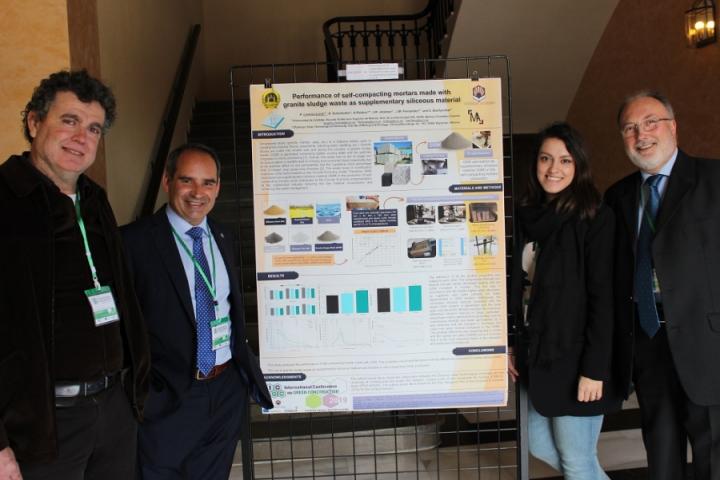
Credit: University of Córdoba
The basis of the construction industry clashes head-on with environmental sustainability. Extracting raw materials and turning them into building materials has high energetic costs. Granite production, totaling 614,000 tons in Spain in 2013, leaves behind it a series of residues that are difficult to manage. This is the case of granite sludge, the material that results from the mixture of dust particles given off during the cutting process and the water used to cool the blade. When granite sludge is dumped at a landfill and the water evaporates, the silicon dust ends up going into the atmosphere and can be inhaled, with negative health consequences. It can also interfere with normal soil mechanics.
Aiming to properly manage these residues and in doing so prevent health and environmental problems, three University of Cordoba research groups have joined forces to analyze the feasibility of using granite sludge to substitute conventional aggregates in self-compacting mortar.
In this vein, “it is possible to substitute up to 40% of conventional aggregates for granite sludge while still maintaining the mortar’s qualities of durability, strength and compaction” according to the lead researcher working on the study, Angélica Lozano, from the the Construction Engineering group at UCO. Thus, granite sludge becomes a sustainable alternative to using conventional aggregates.
Working in synergy with each other are the groups of “Construction Engineering”, “Materials and Applications” and “Plasma Physics: Characterization, Models and Applications”, led by Professors José Ramón Jiménez, José María Fernández and Antonio Rodero respectively. Two aims are accomplished: managing a residue that is bad for our health, and the environmental sustainability of self-compacting concrete, currently one of the most sought-after materials in the building industry since it can be compacted without having to apply compaction energy. Despite the advantages of this new material, the need for a high percentage of aggregates to be extracted is not environmentally sustainable. However, using granite sludge will greatly help solve the problem of this lack of sustainability.
###
Lozano-Lunar, A., Dubchenko, I., Bashynskyi, S., Rodero A., Fernández J.M., Jiménez, J.R. (2020 Performance of self-compacting mortars with granite sludge as aggregate. Construction and Building Materials. Volume 251, 118998, ISSN 0950-0618 https:/
Media Contact
Elena Lázaro
[email protected]
Related Journal Article
http://dx.




